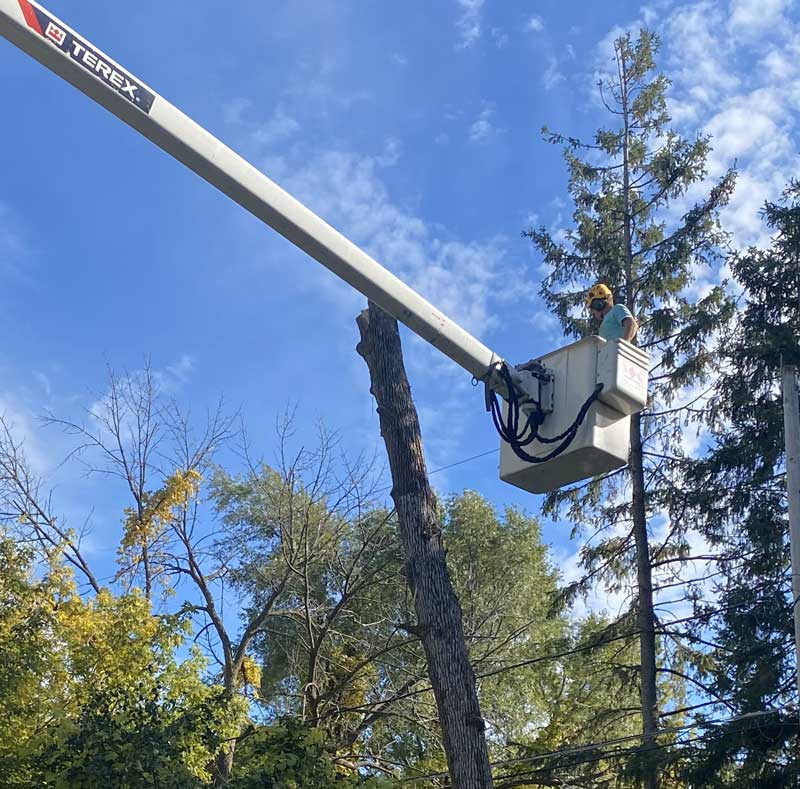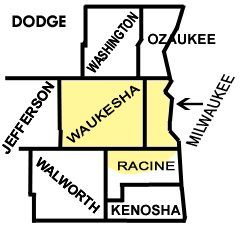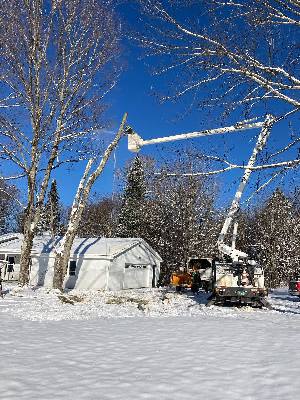Complete our form to receive a quote. Please include details such as approximate diameter, height, & type of each tree, what is needed, location on the property, access details, etc.
We provide professional services with experienced ISA Certified Arborists utilizing safe, professional equipment. Our expert tree services include tree removal, tree trimming, stump removal, storm damage clean-up, and more! We also offer a professional tree health risk assessment with our on-staff ISA Certified Arborists to help you make informed decisions about any damaged or diseased trees.
Serving All of Waukesha County and some of the surrounding areas.

Our service area includes Waukesha and Milwaukee Counties, as well as parts of Racine. For a full list of cities, check our full service area page.
Contact Us today for a FREE QUOTE or if you have any questions!

No matter how big or small a tree is or where it’s located on your property, you can count on Dunbar Tree Service for complete and safe tree removal.
Whether your tree has been damaged by storms, is old and diseased, or is in the way of power lines or your development plans, we’ll take it down to the ground and haul away the wood. Stump grinding services also are available.
Call our locally owned company now.
Our full tree trims consist of removing dead branches, cross branching, interior cleaning, and even raising the canopy if requested by the customer. We specialize in safe pruning to give your trees, home, and other structures necessary space to avoid damages. Trimming your trees will help keep them healthy and beautiful for years to come. Our amazing clean-ups are included in our tree trimming services.
Dunbar Tree Service provides high-quality lot clearing services. You may have just purchased a lot to build your new dream house or business. We provide excellent service using state-of-the-art equipment and experienced professionals to clear your lot and pave the way for your construction projects.
We offer professional stump grinding services for both large and small tree stumps. We utilize self-propelled, lightweight stump grinders to help get to hard-to-reach areas. Our amazing clean-up policies are always implemented in all our work including our stump grinding services.
Yes! We work in the winter! Winter is the perfect time for professional tree trimming and removal. While it may seem unconventional to tackle tree care during the winter months, the season presents distinct advantages for these essential winter tree services, such as reduced risk, enhanced visibility, and opportunities for preventative maintenance and pest control.
Contact Us today for a FREE QUOTE or to learn more about our winter services!

Chris Dunbar is an ISA certified arborist, ISA #WI-1163A, working in the industry since 1999. Chris specializes in a wide range of residential and commercial tree services, where he is dedicated to maintaining a safe and professional environment. With over 20 years of working in southeast Wisconsin, he brings a high level of expertise to every project.
Additionally, Chris is licensed and certified for the application of pesticides, fungicides, and insecticides by the State of Wisconsin Department of Agriculture, Trade and Consumer Protection.